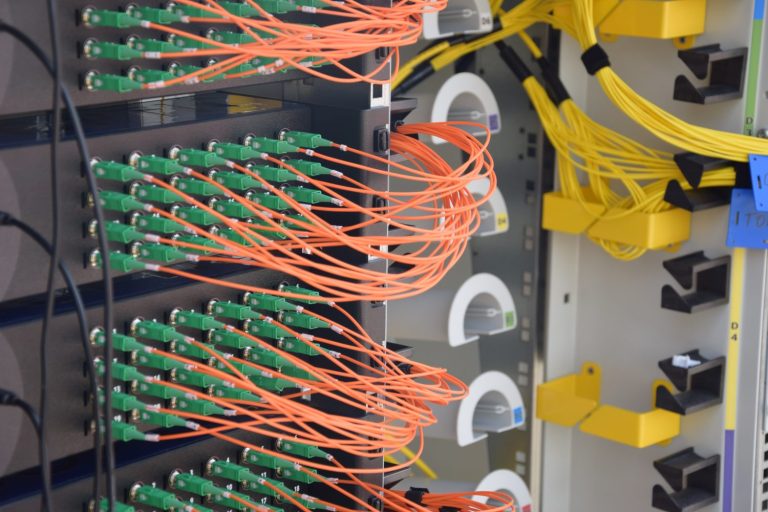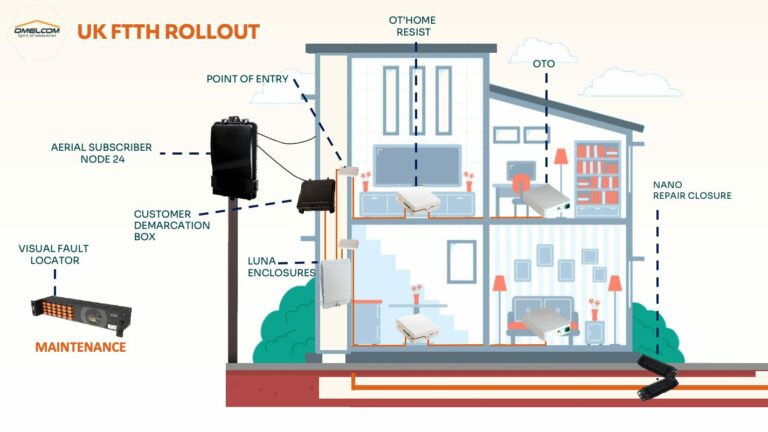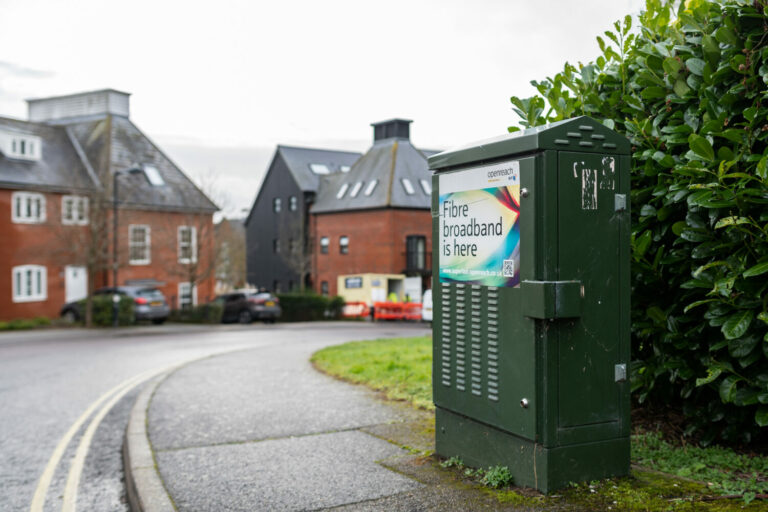⚡️ Achieving Resilience in FTTH Networks
Strategies and Solutions 🛡
In an era where digital connectivity is indispensable, ensuring the resilience of FTTH (Fiber to the Home) networks has emerged as a critical imperative. Insights gathered from in-depth discussions with industry experts shed light on several essential strategies and solutions to fortify these networks against a spectrum of risks, spanning climatic challenges, technological considerations, and security issues.

🔒 Securing Nodal Points
The strategic significance of Optical Node Hubs in FTTH networks is undeniable. The geographical positioning, access security, and proactive management of climatic risks take centre stage.
Strategic Positioning: Opting for non-flood-prone zones is imperative. Implementing preventive measures, like constructing portable barriers and utilising sensors to monitor watercourses, becomes a prerequisite.
Altitude and Climatic Risks: Forecasting climatic trends and mapping risks until 2023 are vital for anticipating climatic challenges, including the strategic prevention of floods through location choices.
Managing Single Points of Failure: Mitigating risks associated with a single point of failure at the Optical Node Hub exit is a critical challenge, accelerating the search for solutions to ensure operational continuity.
⚠️ Underground Deployment and Incident Management
The debate over the underground deployment of FTTH networks, despite its high cost, underscores the need for meticulous management and proactive measures to address incidents.
Underground Deployment: Exploring underground deployment as an alternative option is driven by the consideration of climatic risks, particularly addressing concerns like flooding.
Incident Management: Raising awareness about fire risks and the implementation of security measures are imperative steps to fortify network resilience, safeguarding against a spectrum of emergency scenarios.
🤝 Interdependence of Stakeholders and Artificial Intelligence (AI)
Understanding stakeholder interdependence and leveraging artificial intelligence are pivotal aspects of ensuring resilience within the FTTH network ecosystem.
Stakeholder Interdependence: Effective coordination among different stakeholders, be it in security, service restoration, or collaboration among providers, is crucial for a swift response to incidents.
Artificial Intelligence: AI contributes significantly to anomaly detection, continuous line monitoring, and the analysis of extensive data sets, enabling the anticipation of incidents and the optimisation of maintenance operations.
Maintenance and Resilience: Maintenance, whether preventive, predictive, or corrective, stands as a fundamental pillar of network resilience, ensuring the longevity of infrastructure and contributing to ongoing user satisfaction.
👥 Role of Local Authorities
Local authorities emerge as key partners in network management, with a particular focus on defining acceptable intervention timelines in case of disruptions.
Collaboration with Local Authorities: Close collaboration with local authorities is essential to define intervention protocols in case of incidents, with regular audits to inform these crucial partners.
The success of FTTH network resilience hinges not only on robust technological infrastructure but also on elaborate strategies, effective collaboration among stakeholders, and proactive maintenance. This combined approach is indispensable to overcoming current challenges and ensuring continuous connectivity, thus ensuring user satisfaction in an increasingly interconnected world.







